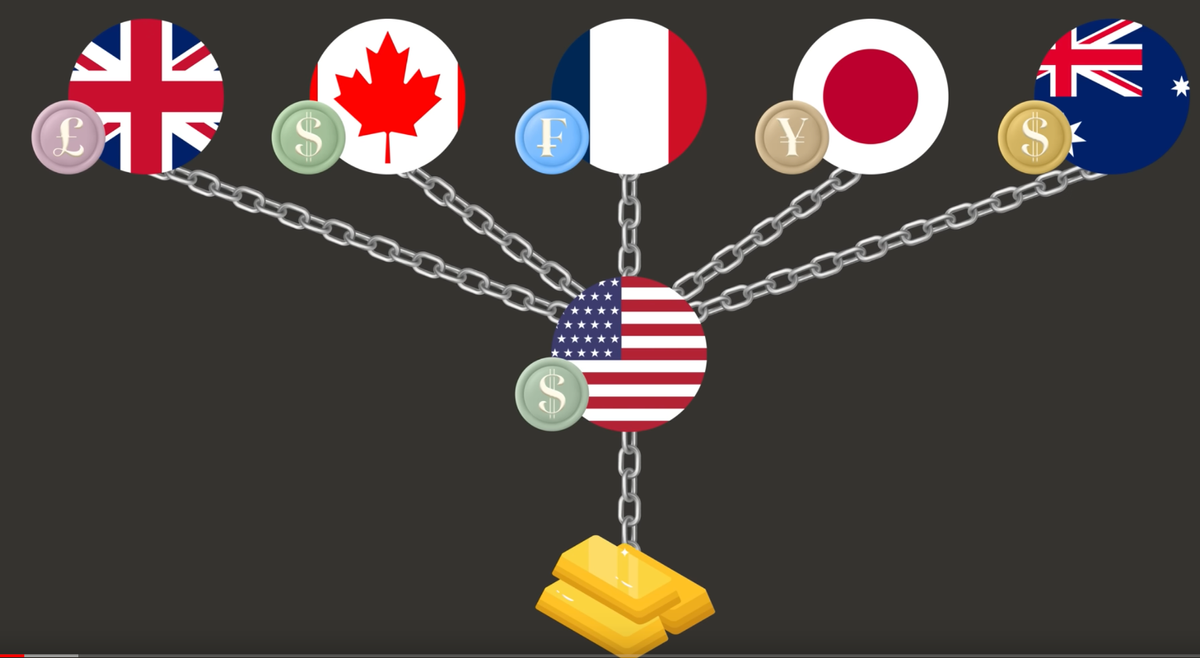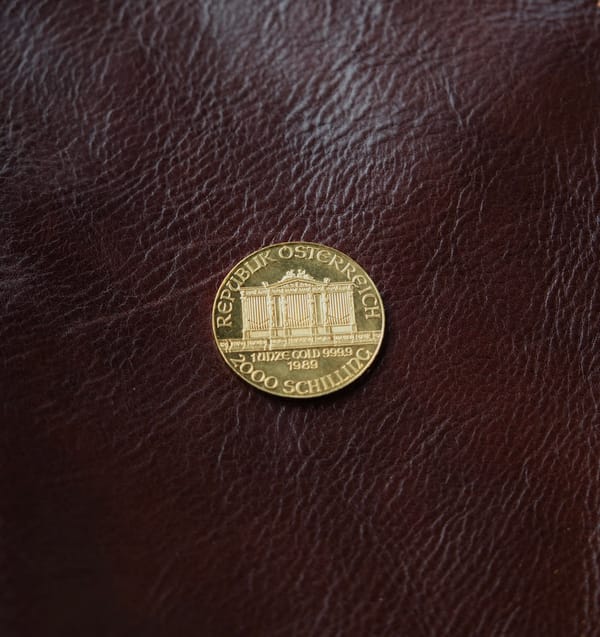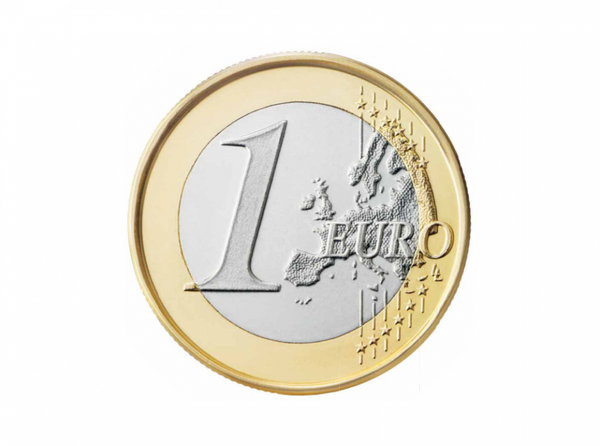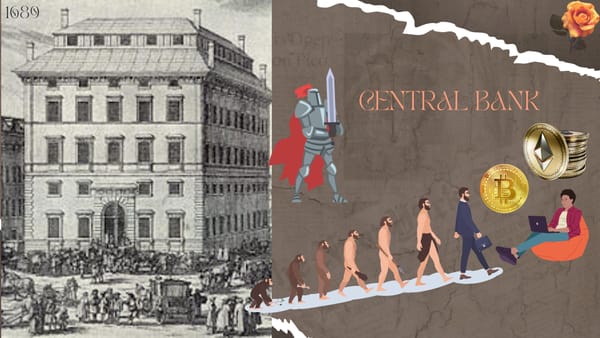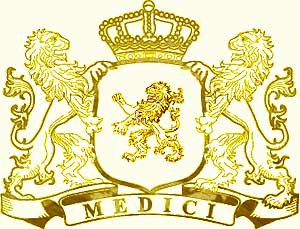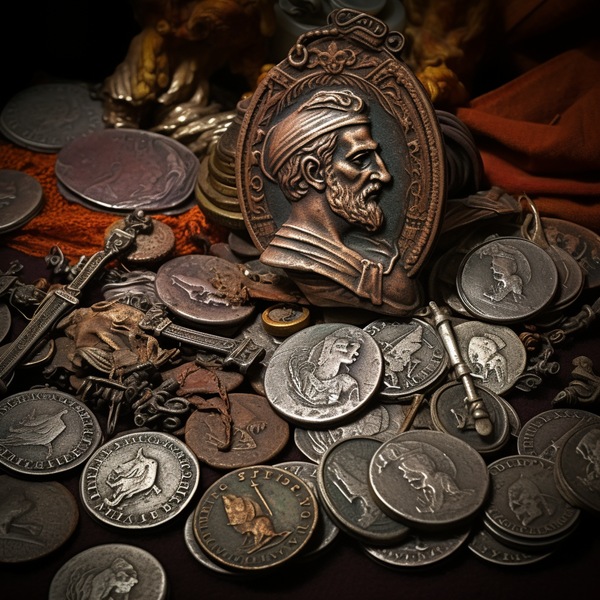You live in 1834, US. You can walk into your local bank and exchange 20 US dollars for an equivalent worth of physical gold. The dollar is 100% backed by gold, and the bill itself represents a gold receipt. The citizens trust the system because it's fair, predictable, and based on private ownership.
Around the Western world, from 1870 to 1914, the international gold standard was mainly backed by the Bank of England, as Great Britain had an enormous amount of gold in its vaults thanks to its rich and successful history. Both the European and US GDP were growing at a solid pace—from $696 billion in 1820 to $2726 billion in 1913.
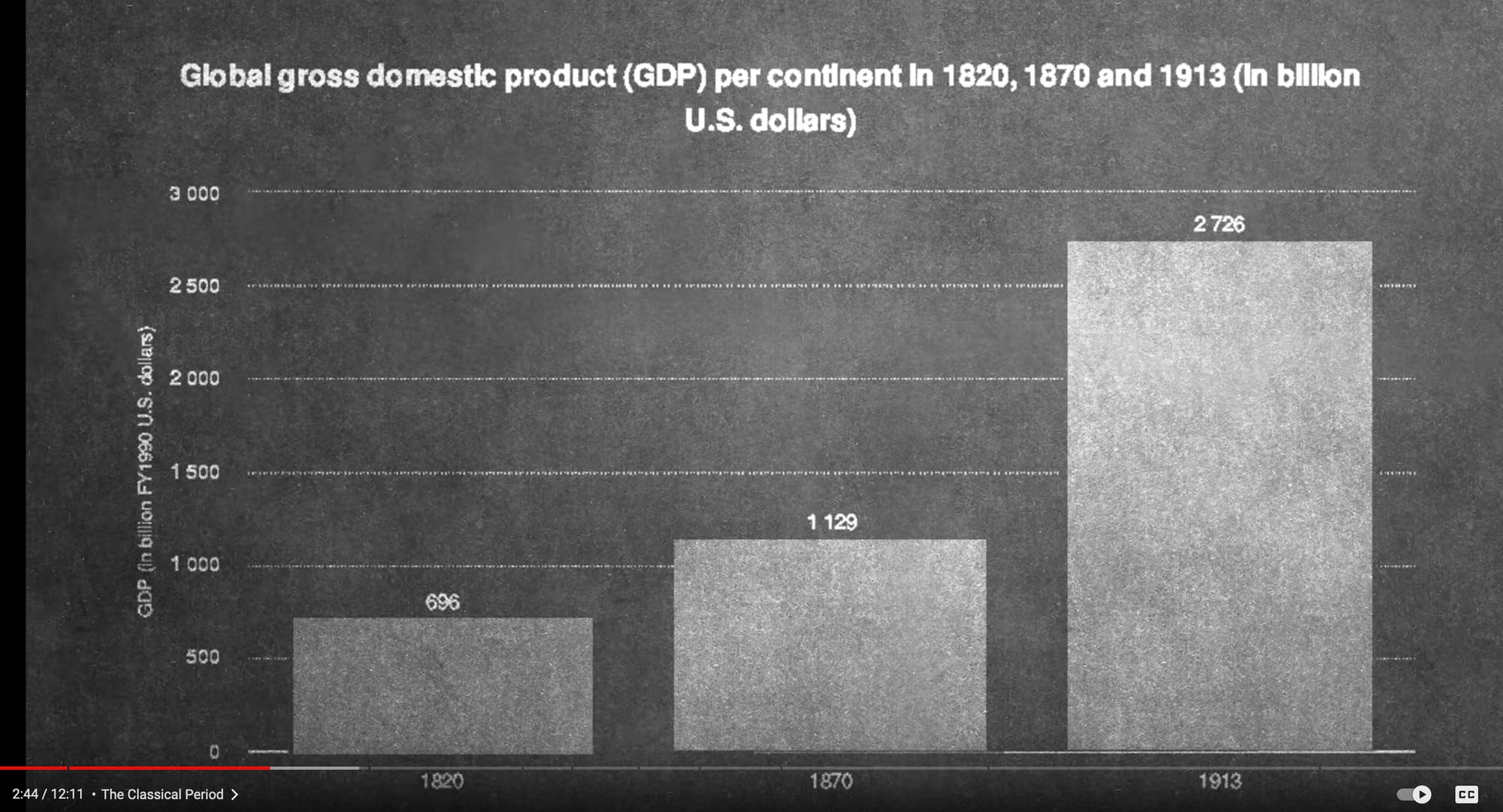
Unfortunately, during WWI and WWII, European countries were forced to sell their gold to the US in exchange for food, ammunition, and supplies, and the US accumulated 2/3 of all gold in the world within a few decades.
But selling gold to fund the war is not enough—you must take on debt. But what if your country's currency is limited by its gold reserves? You introduce a Fractional Gold System, where only a fraction of the currency is backed by gold—for example, 40%. And so the countries expanded their money supply without increasing their nation's productivity or wealth, which naturally led to inflation and later hyperinflation.
On a timeline:
- In 1931, the UK broke its gold standard.
- In 1933, the US nationalized the gold held by private citizens, forbade its convertibility, and pegged it to $20 per ounce. Foreign investors could still exchange dollars for gold to preserve international trade.
- In 1934, the US decided to change the price of gold to $35 per ounce. Economists argue this was necessary to gain flexibility to get out of the Great Depression, but many argue that this government intervention actually prolonged it and that the price was arbitrarily chosen.
- In 1944, all economists worldwide met in Bretton Woods to discuss a new monetary system post-World War II with a plan to get off the Gold Standard. They came up with the idea to peg the US dollar to Gold and link all currencies to the US dollar. They also created the International Monetary Fund and World Bank to allow governments to take debt as long as they loosen trade restrictions, prohibit nationalization of industries, and promote free trade.
- From 1944 until 1971, the Western economic system ran on the Bretton Woods System, a monetary management system designed to simplify operations between the US and the Allies after WW II.
At this point, all currencies (Pound, Franc, Yen, and others) were exchangeable for a fixed amount of US dollars, and the US dollars were exchangeable for a pegged amount of gold.
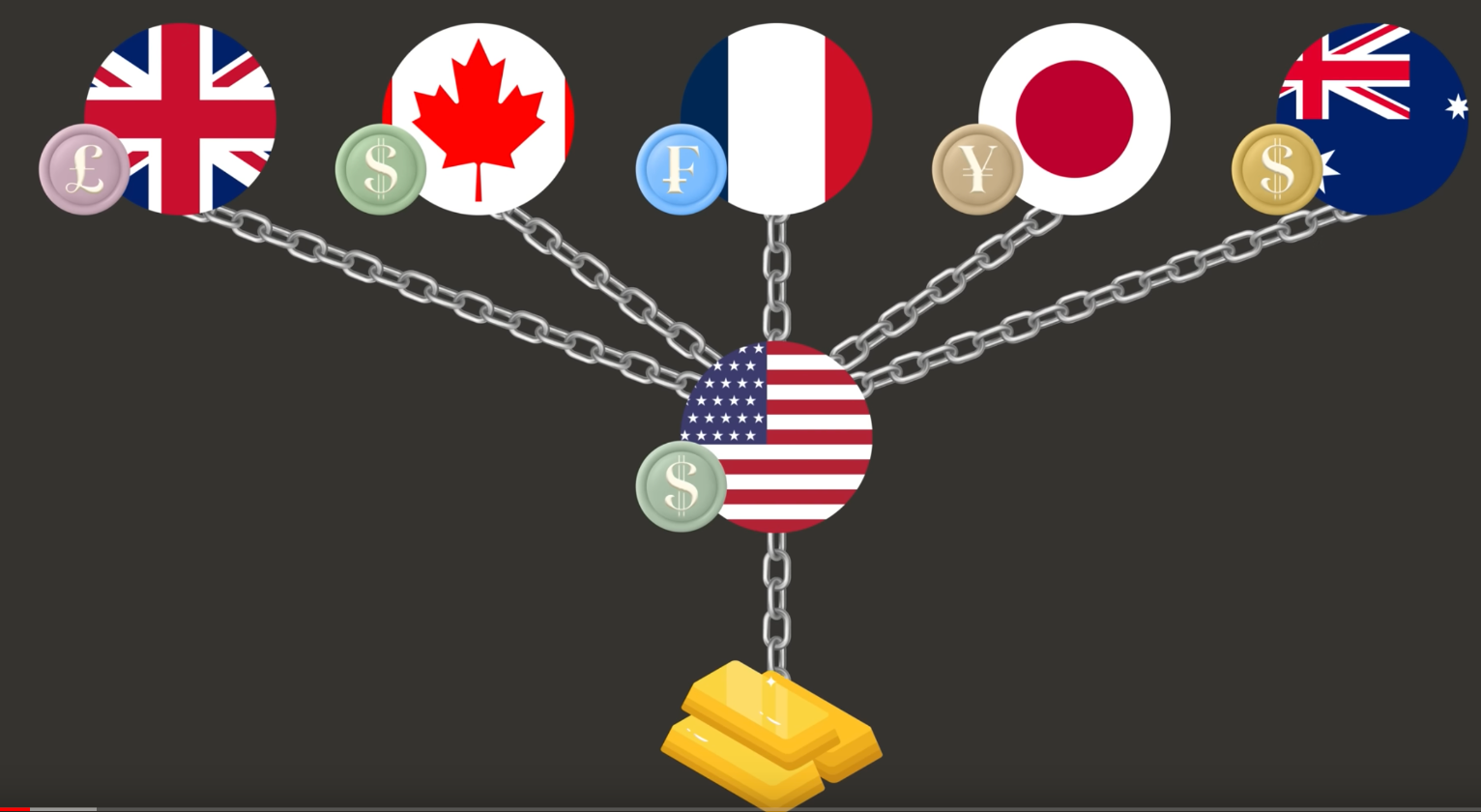
The system worked pretty well and enabled immense growth in global trade and GDP:
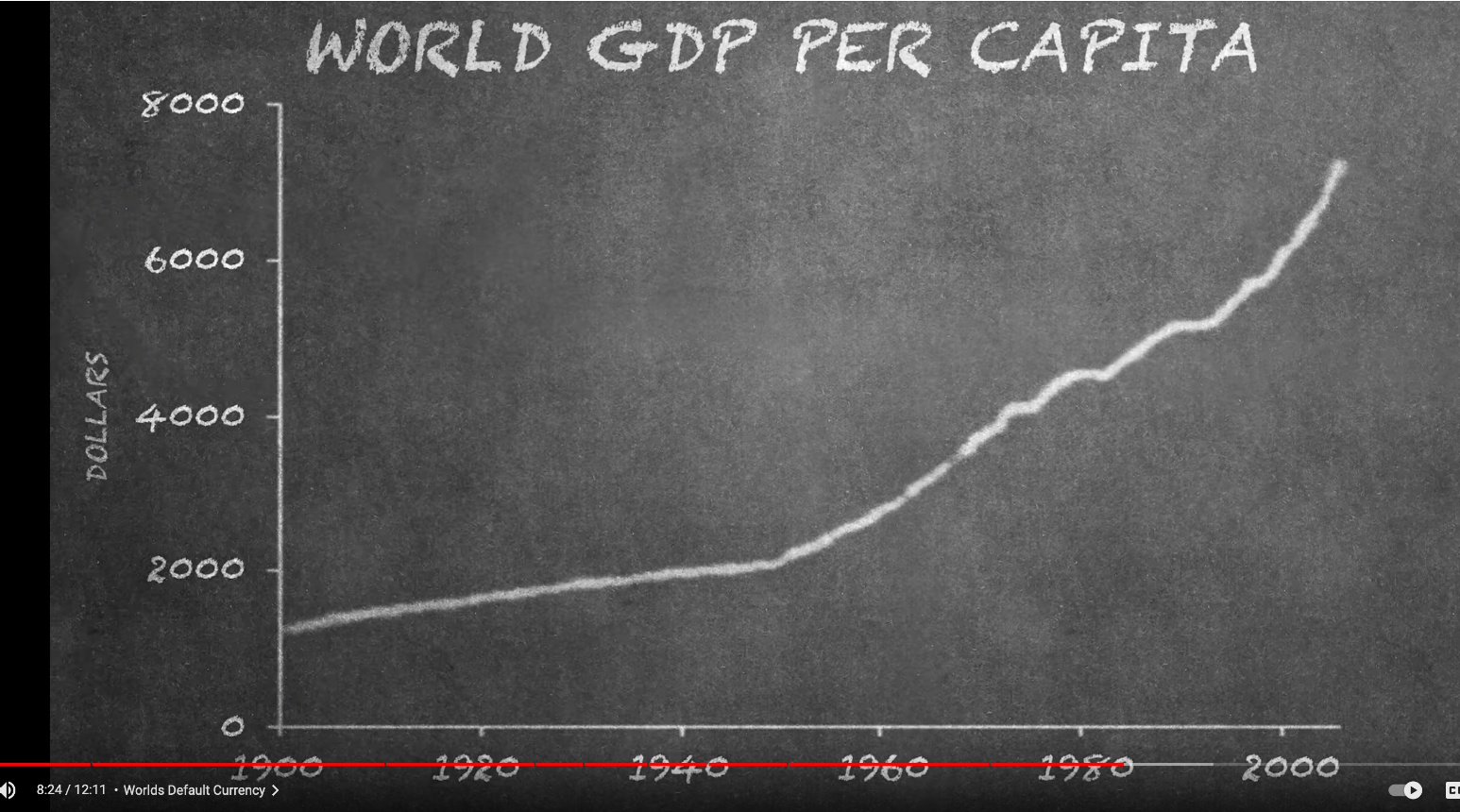
However, currencies are supposed to go up and down in price depending on how the economy progresses:
- If the economy goes down, the currency will lose value, but it will also make the country's exports more competitive as other countries can import them more cheaply.
- If the economy increases, the currency will appreciate in value, and the country can invest in foreign economies.
If the currency is fixed, this system doesn't balance itself properly. This was an acceptable trade-off while the geo-political system was healthy and growing.
In the 1960s, America started a high level of debt borrowing to fund the Vietnam war together with high-inflationary socialist programs like the War on Poverty, raising suspicion the pegged US dollars became overvalued. The French were the first to notice and started de-dollarizing and importing physical gold back to France.
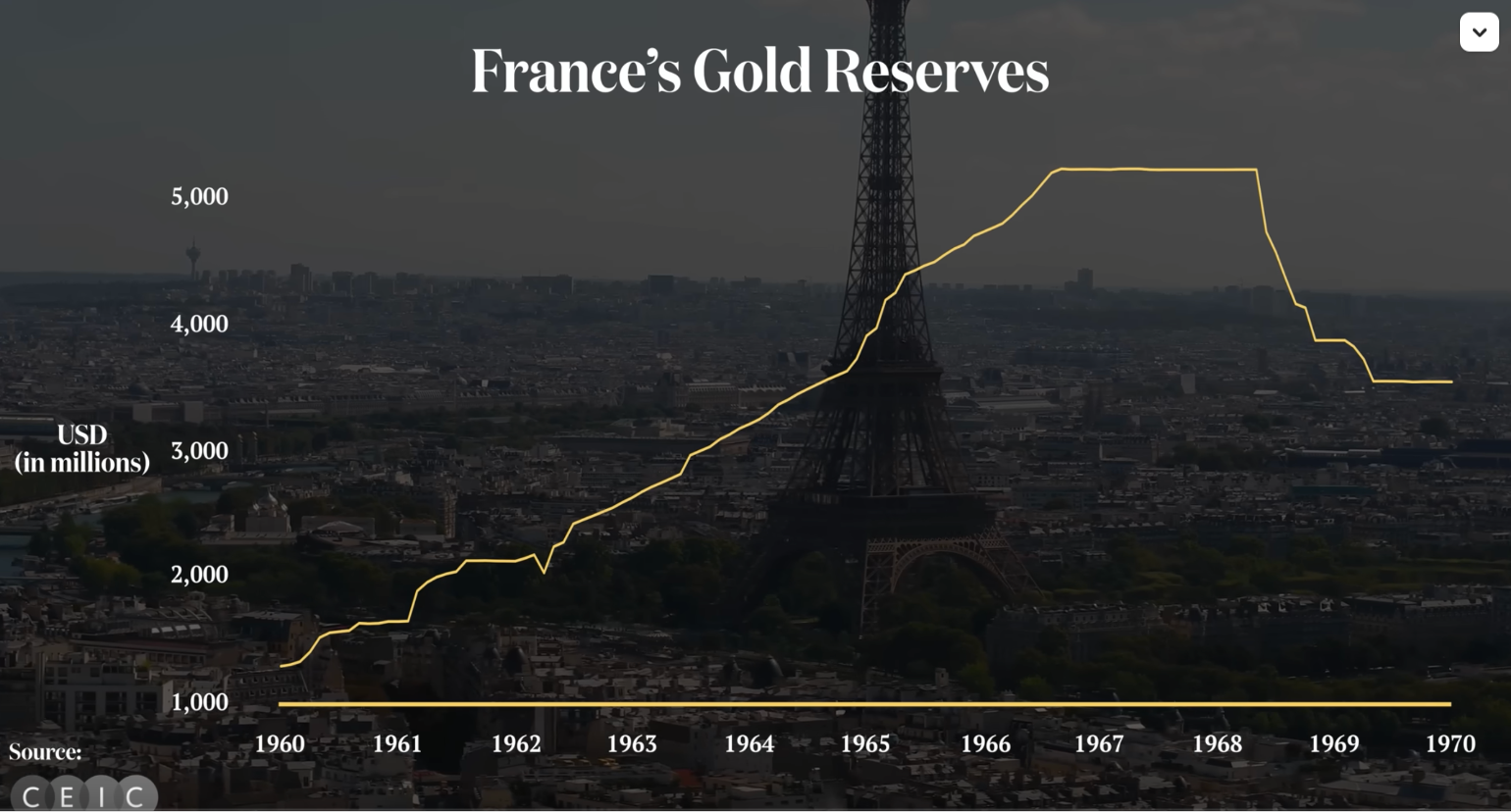
In 1965, French President DeGaulle said the US had abused its financial position of managing the global reserve currency by going into enormous debts for free at the expense of other countries, which would eventually lead to a collapse of the worldwide currency and a second Great Depression and called as a measure to prevent the collapse for a return to the Gold Standard, the indisputable monetary base, as it was before the tragic WW I.
Six years later, in 1971, US President Nixon famously announced in his speech:
“I have directed Secretary Connally to suspend temporarily the convertibility of the American dollar except in amounts and conditions determined to be in the interest of monetary stability and in the best interests of the United States.”
“A necessary action to defend the dollar against the speculators”.
Fun side note: "To defend against the speculators" sounds like the government's anti-crypto propaganda in 2024. History certainly rhymes.
And, because nothing lasts longer than a temporary government program, the US is on the FIAT system to this day - a currency backed solely by the trust in government and the Central Bank's ability to raise and lower interest rates to stimulate (economic growth) or slow down the economy (combat inflation).
The problem with abandoning the Gold Standard
The largest downside is that it leads to financial repression—people saving money get lower interest than the actual inflation. This mechanism transfers wealth from savers to borrowers as debt becomes cheaper. For example, you get 3% interest on your deposit, but the currency loses 50% purchasing power in the next 5 years.
Most economies worldwide aim for a moderate inflation rate because this incentivizes people to spend money and stimulates the economy.
The gold standard also keeps central banks and governments in check by preventing them from borrowing debt from the next generation to fund all kinds of government programs - from military to social welfare and "buying voters." If the debt becomes too large, the government then once again prints more money to inflate the debt away until the next election period.
Fiat inflation is the ultimate tool for taxing regular people without their knowledge and without having to change law through the parliament democratically - and Gold System prevents this.
Advantages of FIAT
Keynesian economists promote government interventions as a tool to manage the economy and insist the FED needs to have power over the economy by controlling the interest rates and the money supply. It gives them a lot of flexibility to decision-makers in a short period of time.
They also argue that the economy under the Gold Standard is too volatile - it has to go through cycles of boom and bust, and it took too long to recover from the famous Great Depression. However, others like Austrian school of economics argues this is a healthy and necessary behavior in free markets and argues against government intervention.
In a more elaborate words, to quote from Wikipedia:
A Keynesian would suggest government intervention during a recession to inject spending into the economy when people will not. However, the heart of Austrian macroeconomic theory assumes the government "fine tuning" through expansions and contractions in the money supply orchestrated by the government are actually the cause of business cycles because of the differing impact of the resulting interest rate changes on different stages in the structure of production. Austrian economist Thomas Woods further supports this view by arguing it is not consumption, but rather production that should be emphasized. A country cannot become rich by consuming, and therefore, by using up all their resources. Instead, production is what enables consumption as a possibility in the first place, since a producer would be working for nothing, if not for the desire to consume.
The impact on inflation
The Atlantic produced a CPI inflation comparison under the Gold Standard and FIAT:
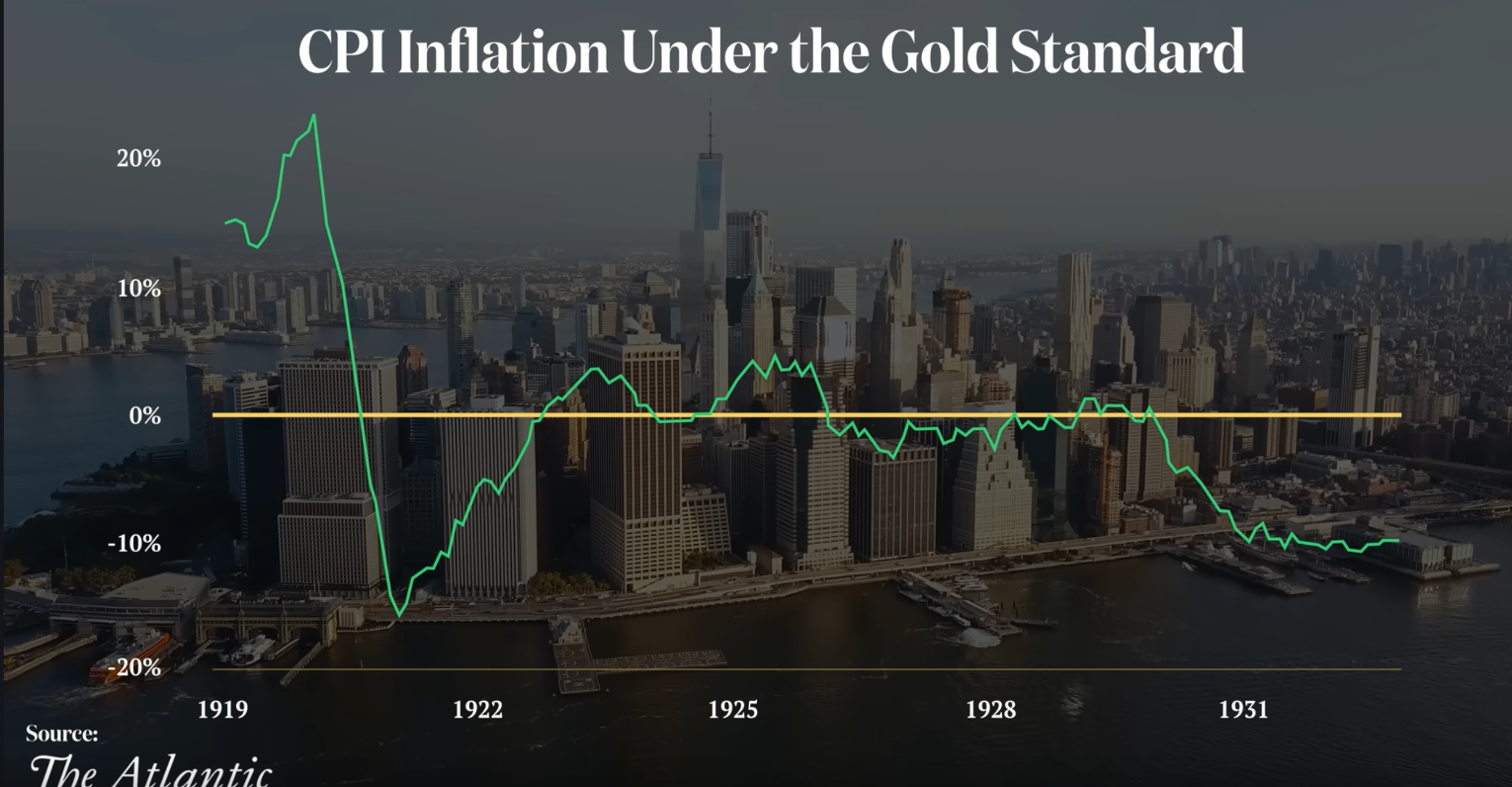
QE = quantitative easing (a fancy word for printing money and bailouts after the 2008 crash):
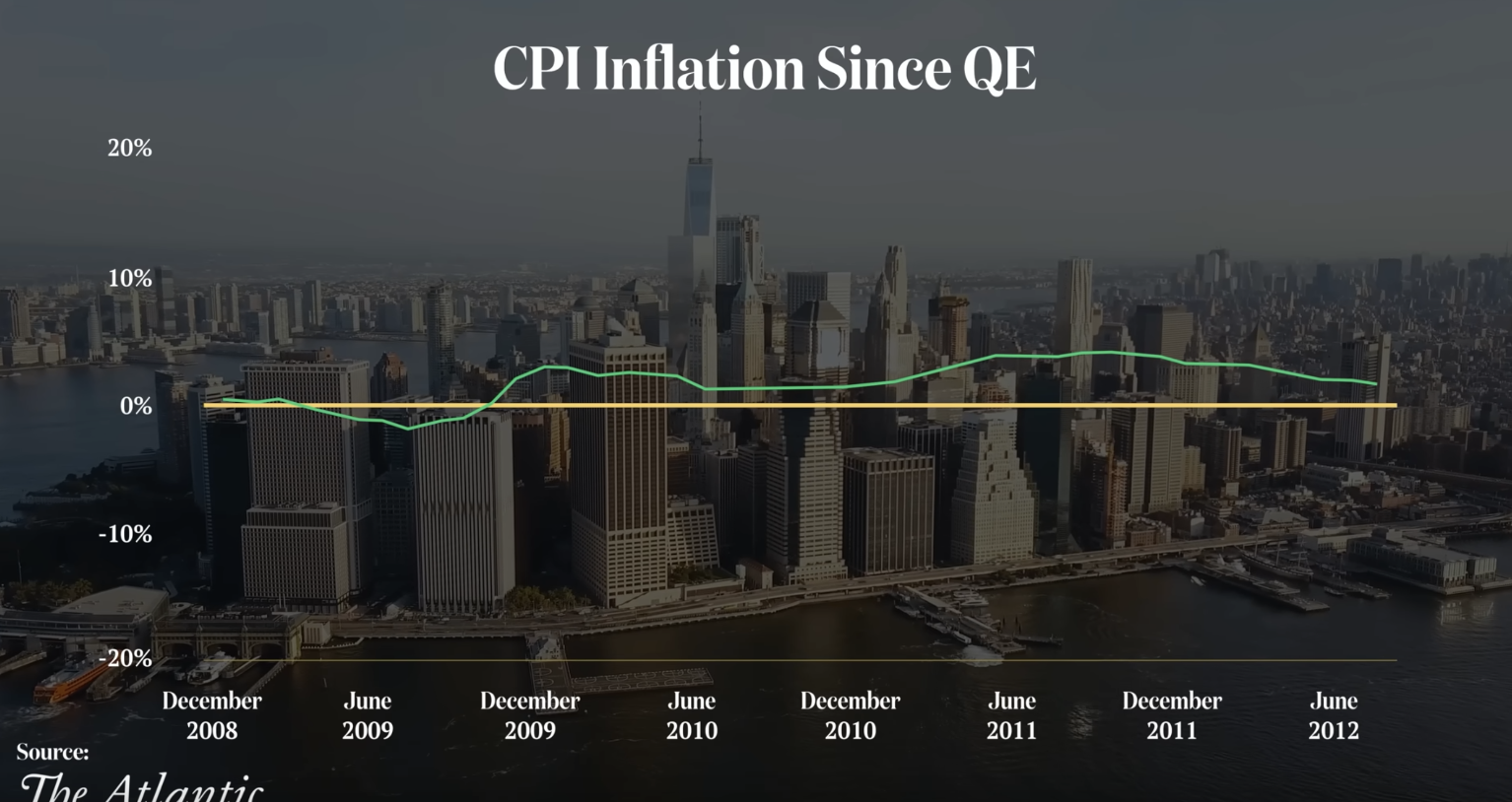
Although the CPI inflation since Quantitative Easing looks more stable, it's essential to mention that the bucket of items for calculating CPI inflation has changed along with its definition several times during this period. Using the CPI definition of 1970, the current CPI inflation would be ~30%!
Further, the QE is just a tool; the important ideology is the Modern Monetary Theory. From Wikipedia:
Modern monetary theory or modern money theory (MMT) is a heterodox macroeconomic theory that describes currency as a public monopoly and unemployment as evidence that a currency monopolist is overly restricting the supply of the financial assets needed to pay taxes and satisfy savings desires. According to MMT, governments do not need to worry about accumulating debt since they can pay interest by printing money. MMT argues that the primary risk once the economy reaches full employment is inflation, which acts as the only constraint on spending. MMT also argues that inflation can be controlled by increasing taxes on everyone, to reduce the spending capacity of the private sector.
MMT is opposed to the mainstream understanding of macroeconomic theory and has been criticized heavily by many mainstream economists. MMT is also strongly opposed by members of the Austrian school of economics, with Murray Rothbard stating that MMT practices are equivalent to "counterfeiting" and that government control of the money supply will inevitably lead to hyperinflation.
My personal view (as a hobby student of Austrian school of economics) is that printing money and measuring the country's success by monitoring the unemployment rate metric or GDP (not even GDP per capita) is a terrible strategy - it's like judging developer's productivity by how many lines of code they write in a year regardless if their's code produce anything valuable...
Could we go back to the Gold Standard?
Economists argue we can not because the Gold Standard is too inflexible for international trade (exchanging Dollar for Gold, Gold for Euro, and Euro for Gold on every trade). There is not enough gold to back all the dollars, and it often leads to wars, given that some countries have significantly more gold mines than others—especially the US, Ghana, China, Russia, and Australia.
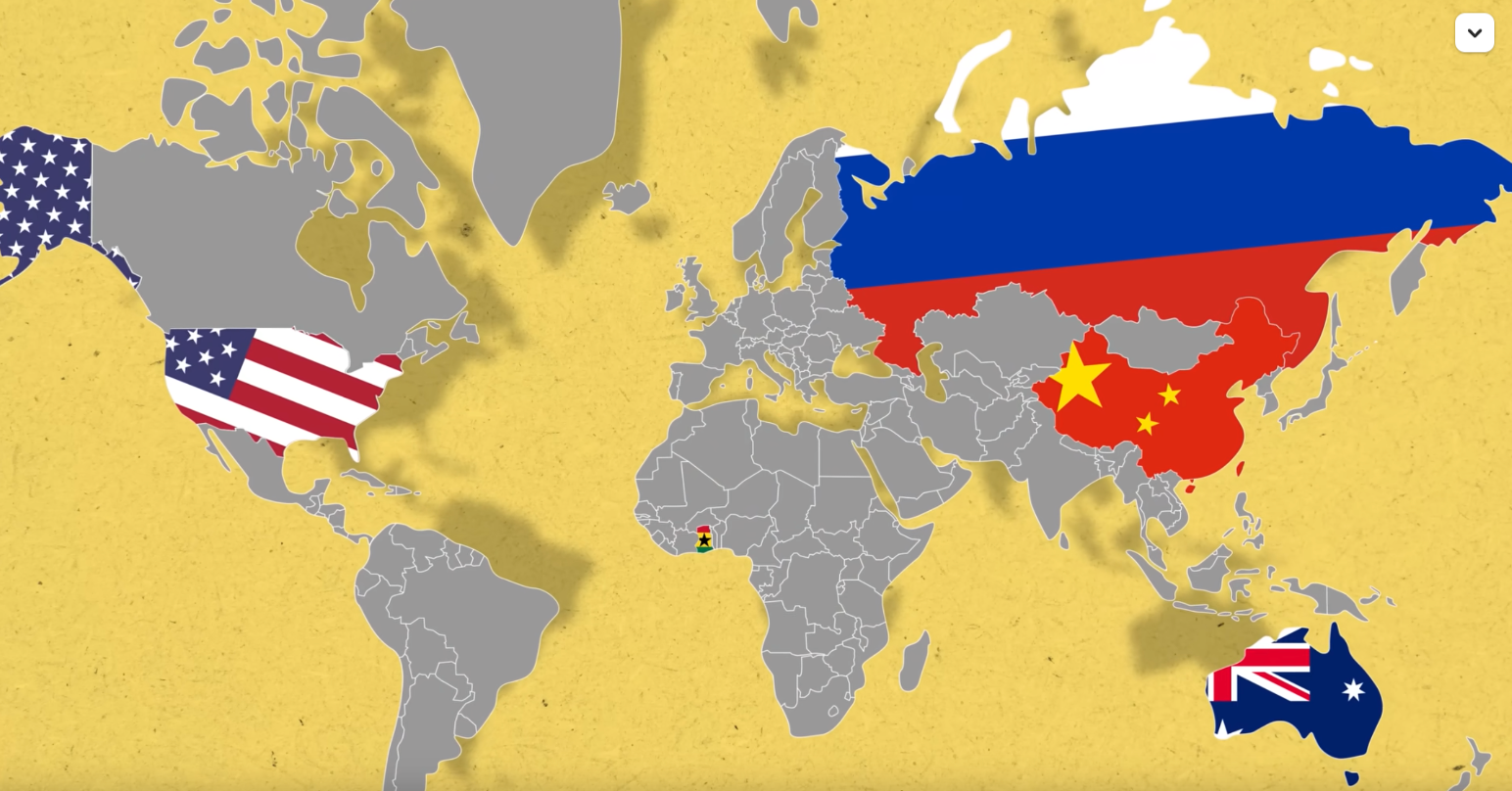
Another problem with the Gold Standard is that as a country's GDP grows, so should its money supply; otherwise, it leads to deflation, which is arguably even worse than inflation. This was actually a problem all the way in a growing Ancient Rome - there was not enough currency (silver Denarius) circulating through the economy, so they started producing currencies with less silver in each coin to increase the empire's currency supply.
You can read this blog post I wrote recently to dive into the topic further:

Ultimately, the complexity seems to be:
While simultaneously:
What do bankers think about the state of FIAT in 2024?
As an European, I would like to finish this post by quoting the official statistics by European Central Bank from June 2024.
This is the snapshot of the current international monetary system:
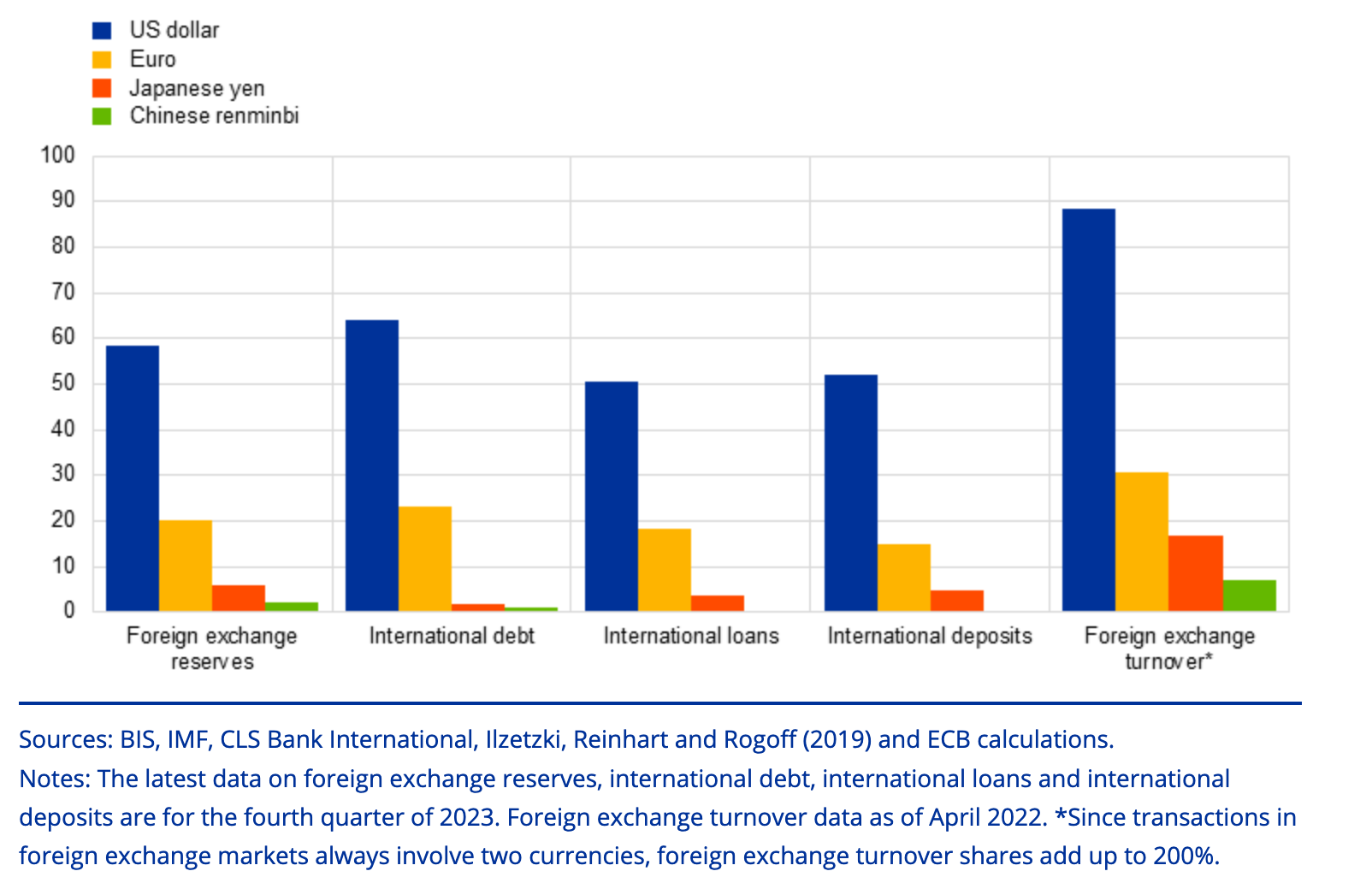
The accumulation of gold as a reserve asset has continued, most notably in countries closely linked to Russia, as well as official investments in non-standard reserve currencies. Overall, this suggests that the international currency status of the euro should not be taken for granted.
The Central banks are currently accumulating gold at record pace and purchased more than 1,000 tonnes of gold in 2023, close to the historical record in 2022.
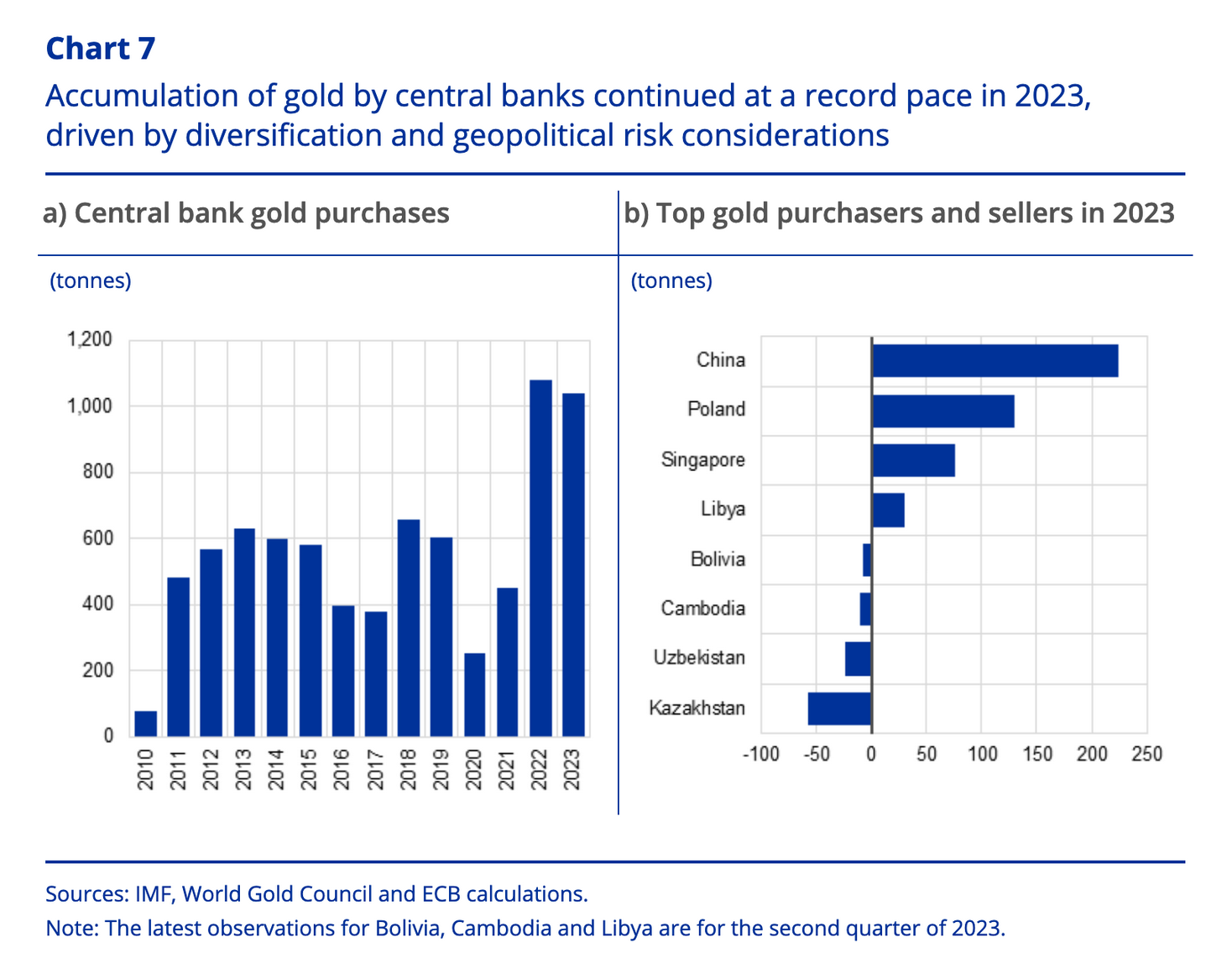
Who do you trust?
Credit to helpful educational sources I watched to compose this article:


